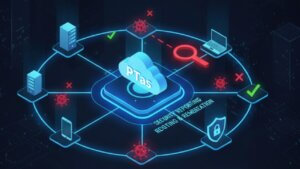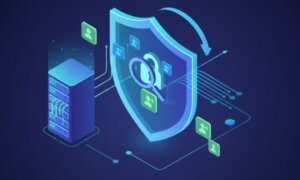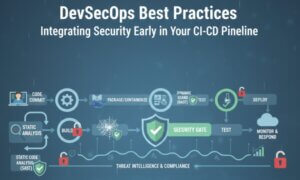In an increasingly interconnected digital world, the distinction between ethical hacking and malicious hacking is crucial to understanding cybersecurity dynamics. While both involve exploiting systems and networks to identify vulnerabilities, their objectives and outcomes are fundamentally different. This blog delves into the key differences, methodologies, and broader impacts of ethical and malicious hacking.
Table of Contents
Defining Ethical Hacking

Ethical hacking, also known as white-hat hacking, involves authorized attempts to probe systems and networks to identify vulnerabilities. Ethical hackers are cybersecurity professionals who work within legal frameworks to help organizations bolster their defenses against potential cyber threats. To build stronger defenses against evolving threats, many organizations choose to hire Ethical Hackers from reputable sources like Toptal, ensuring they work with vetted professionals who can identify and mitigate vulnerabilities responsibly.
Key characteristics of ethical hacking include:
Permission and Authorization: Ethical hackers always operate with explicit consent from the organization they’re assessing.
Proactive Defense: The goal is to prevent security breaches by identifying and addressing vulnerabilities.
Transparency: Ethical hackers document their findings and provide detailed reports with actionable recommendations.
Understanding Malicious Hacking
Malicious hacking, often referred to as black-hat hacking, is the unauthorized and illegal exploitation of systems, networks, or applications for personal, financial, or political gain. These hackers aim to steal data, disrupt services, or cause harm.
Key characteristics of malicious hacking include:
Unauthorized Access: Malicious hackers infiltrate systems without permission.
Harmful Intentions: Their motives often include financial theft, data breaches, espionage, or sabotage.
Lack of Accountability: Malicious hackers operate covertly and avoid detection to escape legal consequences.
Key Differences Between Ethical and Malicious Hacking
While both ethical and malicious hacking involve exploiting vulnerabilities, the intent and outcome set them apart:
| Aspect | Ethical Hacking | Malicious Hacking |
|---|---|---|
| Objective | Strengthen security | Exploit weaknesses |
| Authorization | Conducted with permission | Conducted without consent |
| Outcome | Protect assets and data | Steal, disrupt, or damage |
| Legal Status | Legal and compliant | Illegal and punishable |
| Reporting | Provides detailed reports | Operates covertly to avoid detection |
Methodologies Used in Hacking

Both ethical and malicious hackers utilize similar tools and techniques, but their application differs based on intent.
Common Tools and Techniques
Reconnaissance:
Ethical Hackers: Gather information to assess vulnerabilities.
Malicious Hackers: Use data for exploitation.
Scanning:
Ethical Hackers: Use tools like Nmap and Nessus to identify open ports and weaknesses.
Malicious Hackers: Scan systems to pinpoint exploitable entry points.
Exploitation:
Ethical Hackers: Test vulnerabilities to provide insights for improvement.
Malicious Hackers: Exploit weaknesses for financial gain or data theft.
Social Engineering:
Ethical Hackers: Simulate phishing attacks to educate employees.
Malicious Hackers: Trick individuals into revealing sensitive information.
Reporting and Remediation
Ethical Hackers: Provide comprehensive reports with actionable recommendations to fix vulnerabilities.
Malicious Hackers: Leave no trace, making detection and remediation challenging.
Impacts of Ethical and Malicious Hacking
Positive Impacts of Ethical Hacking
Strengthening Cybersecurity: Ethical hacking identifies and mitigates vulnerabilities, fortifying defenses against cyber threats.
Building Trust: Organizations that employ ethical hackers demonstrate their commitment to protecting stakeholders.
Compliance with Regulations: Ethical hacking helps meet standards like GDPR, HIPAA, and PCI-DSS.
Educational Awareness: Simulated attacks by ethical hackers educate employees and improve security awareness.
Negative Impacts of Malicious Hacking
Data Breaches: Malicious hackers steal sensitive information, leading to financial and reputational damage.
Operational Disruption: Cyberattacks disrupt services, resulting in downtime and lost productivity.
Financial Loss: Organizations face costs from ransomware, data recovery, and legal repercussions.
Erosion of Trust: Security breaches harm customer confidence and brand reputation.
Conclusion
Ethical hacking and malicious hacking represent two sides of the cybersecurity spectrum. While malicious hacking poses significant threats, ethical hacking serves as a proactive defense mechanism to safeguard digital assets. Understanding the differences between these practices is essential for organizations to navigate the evolving cybersecurity landscape effectively.
By embracing ethical hacking, organizations can not only protect themselves from malicious actors but also build a robust and resilient security framework for the future.
Why Businesses Trust SecureMyOrg for Comprehensive Network Security
At SecureMyOrg, we uncover and fix all possible security vulnerabilities of mobile and web, while providing solutions to mitigate risks. We are trusted by renowned companies like Yahoo, Gojek and Rippling, and with 100% client satisfaction, you’re in safe hands!







Some of the things people reach out to us for –
- Building their cybersecurity program from scratch – setting up cloud security using cost-effective tools, SIEM for alert monitoring, building policies for the company
- Vulnerability Assessment and Penetration Testing ( VAPT ) – We have certified professionals, with certifications like OSCP, CREST – CPSA & CRT, CKA and CKS
- DevSecOps consulting
- Red Teaming activity
- Regular security audits, before product release
- Full time security engineers.
Relevant Posts

AI-Powered Phishing Emails: 7 Ways to Spot and Stop Them Before They Strike
Penetration testing as a service (PTaaS) lets experts simulate real attacks to uncover vulnerabilities before hackers do. This guide explains the process, benefits, and costs, helping businesses strengthen defenses with predictable, ongoing security checks.

Why Regular Penetration Testing is Essential for Modern Companies
Penetration testing as a service (PTaaS) lets experts simulate real attacks to uncover vulnerabilities before hackers do. This guide explains the process, benefits, and costs, helping businesses strengthen defenses with predictable, ongoing security checks.

What Is Penetration Testing as a Service?
Penetration testing as a service (PTaaS) lets experts simulate real attacks to uncover vulnerabilities before hackers do. This guide explains the process, benefits, and costs, helping businesses strengthen defenses with predictable, ongoing security checks.

How To Inspect Encrypted Traffic Without Breaking Privacy
Network administrators face a challenge: securing systems while respecting privacy. This guide explains how to inspect encrypted traffic without breaking privacy using metadata, anomaly detection, and machine learning ensuring visibility, compliance, and trust.

How to Audit Infrastructure as Code (IaC) for Security Vulnerabilities
Discover how to audit Infrastructure as Code (IaC) for security vulnerabilities with this practical guide. Learn to scan IaC files using tools like Checkov, fix issues like exposed resources, and integrate audits into CI/CD pipelines. Protect your cloud systems from misconfigurations and ensure compliance with clear, actionable steps.

DevSecOps Best Practices: Integrating Security Early in Your CI/CD Pipeline
This article provides a practical guide to embedding security into every stage of your CI/CD pipeline. Learn core DevSecOps best practices like SAST, DAST, dependency scanning, secrets management, and compliance automation to catch vulnerabilities early, foster a culture of shared ownership, and build a secure-by-design development process that accelerates release cycles.
